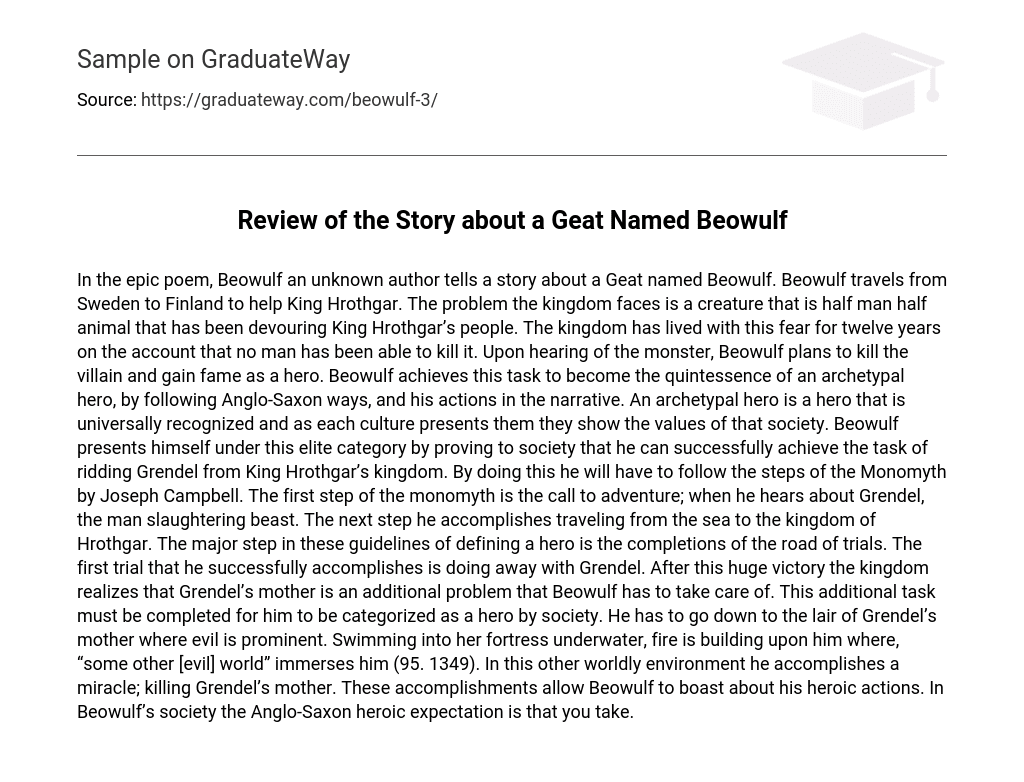In the epic poem, Beowulf an unknown author tells a story about a Geat named Beowulf. Beowulf travels from Sweden to Finland to help King Hrothgar. The problem the kingdom faces is a creature that is half man half animal that has been devouring King Hrothgar’s people. The kingdom has lived with this fear for twelve years on the account that no man has been able to kill it. Upon hearing of the monster, Beowulf plans to kill the villain and gain fame as a hero.
Beowulf achieves this task to become the quintessence of an archetypal hero, by following Anglo-Saxon ways, and his actions in the narrative. An archetypal hero is a hero that is universally recognized and as each culture presents them they show the values of that society. Beowulf presents himself under this elite category by proving to society that he can successfully achieve the task of ridding Grendel from King Hrothgar’s kingdom. By doing this he will have to follow the steps of the Monomyth by Joseph Campbell. The first step of the monomyth is the call to adventure; when he hears about Grendel, the man slaughtering beast.
The next step he accomplishes traveling from the sea to the kingdom of Hrothgar. The major step in these guidelines of defining a hero is the completions of the road of trials. The first trial that he successfully accomplishes is doing away with Grendel. After this huge victory the kingdom realizes that Grendel’s mother is an additional problem that Beowulf has to take care of.
This additional task must be completed for him to be categorized as a hero by society. He has to go down to the lair of Grendel’s mother where evil is prominent. Swimming into her fortress underwater, fire is building upon him where, “some other [evil] world” immerses him (95. 1349). In this other worldly environment he accomplishes a miracle; killing Grendel’s mother. These accomplishments allow Beowulf to boast about his heroic actions.
In Beowulf’s society the Anglo-Saxon heroic expectation is that you take.





